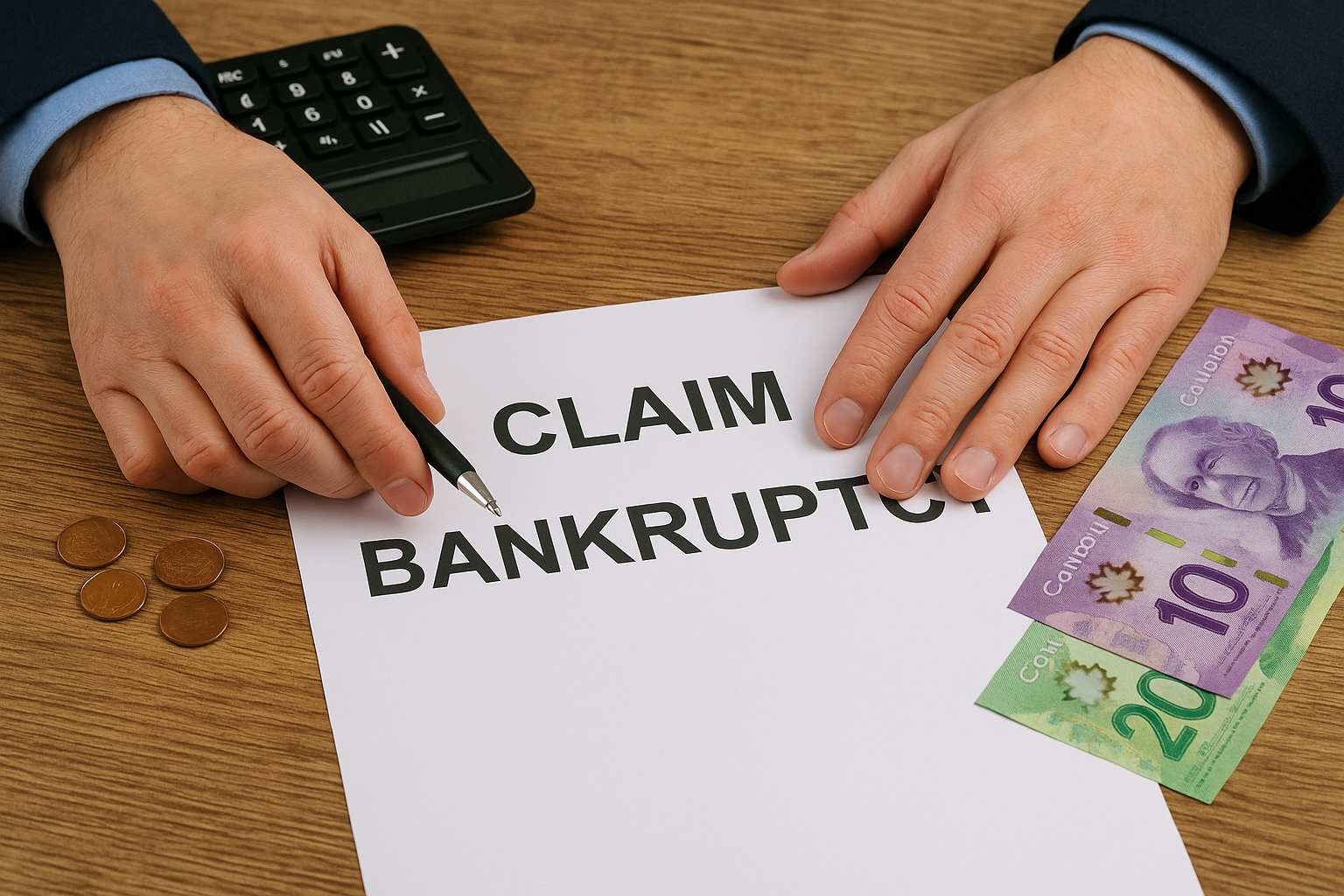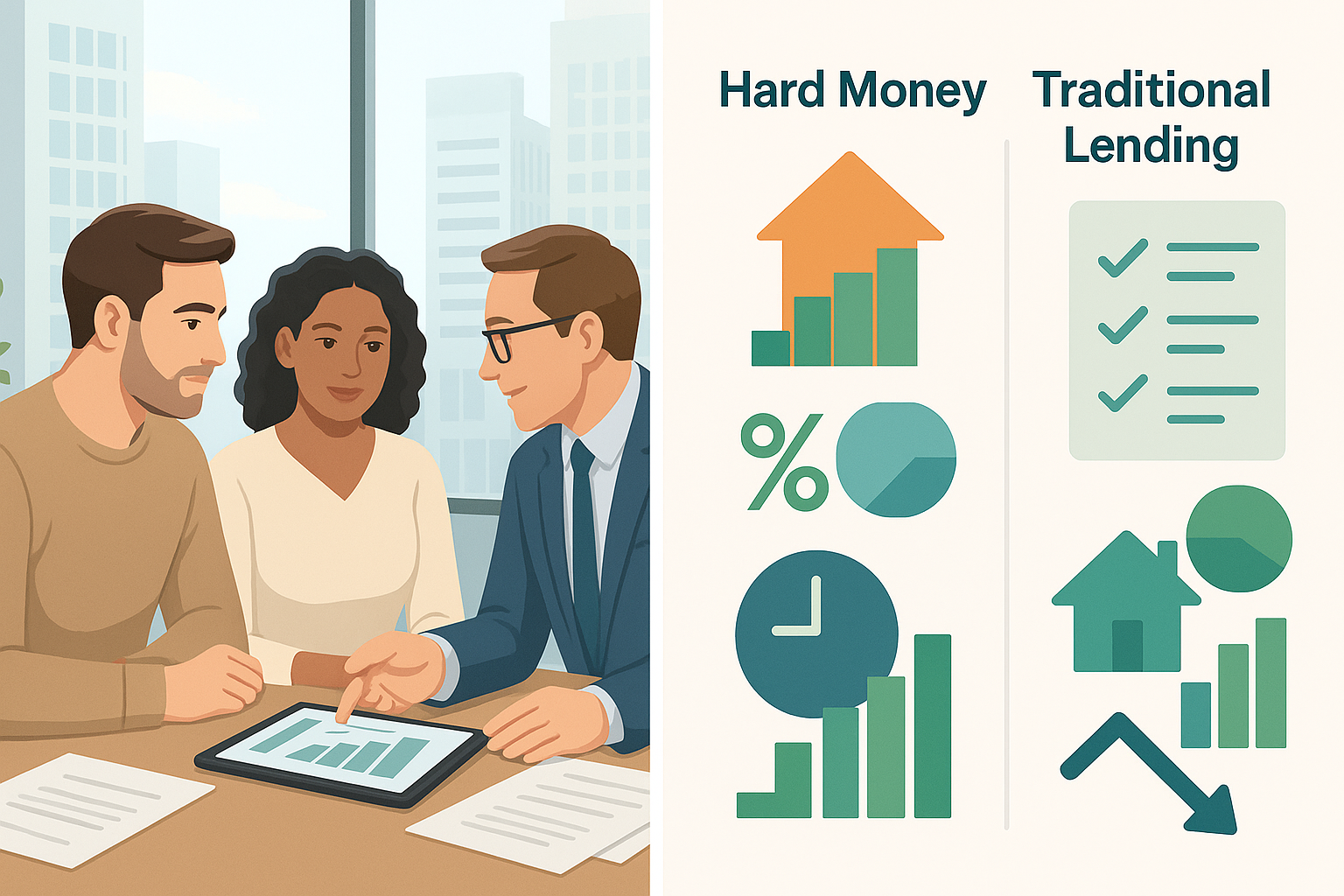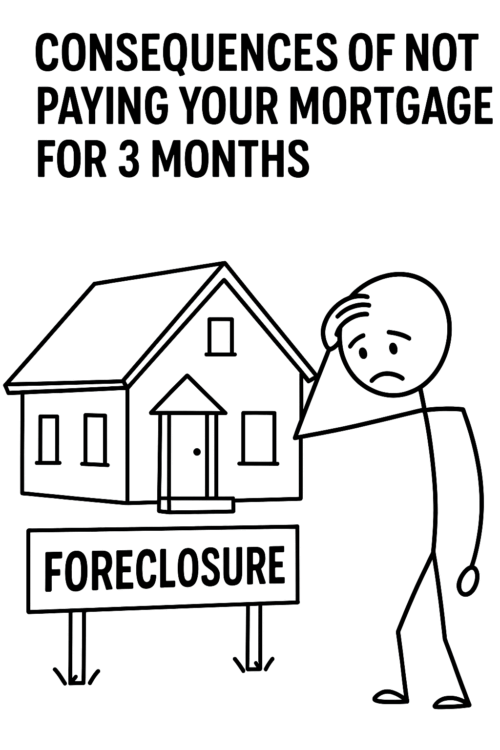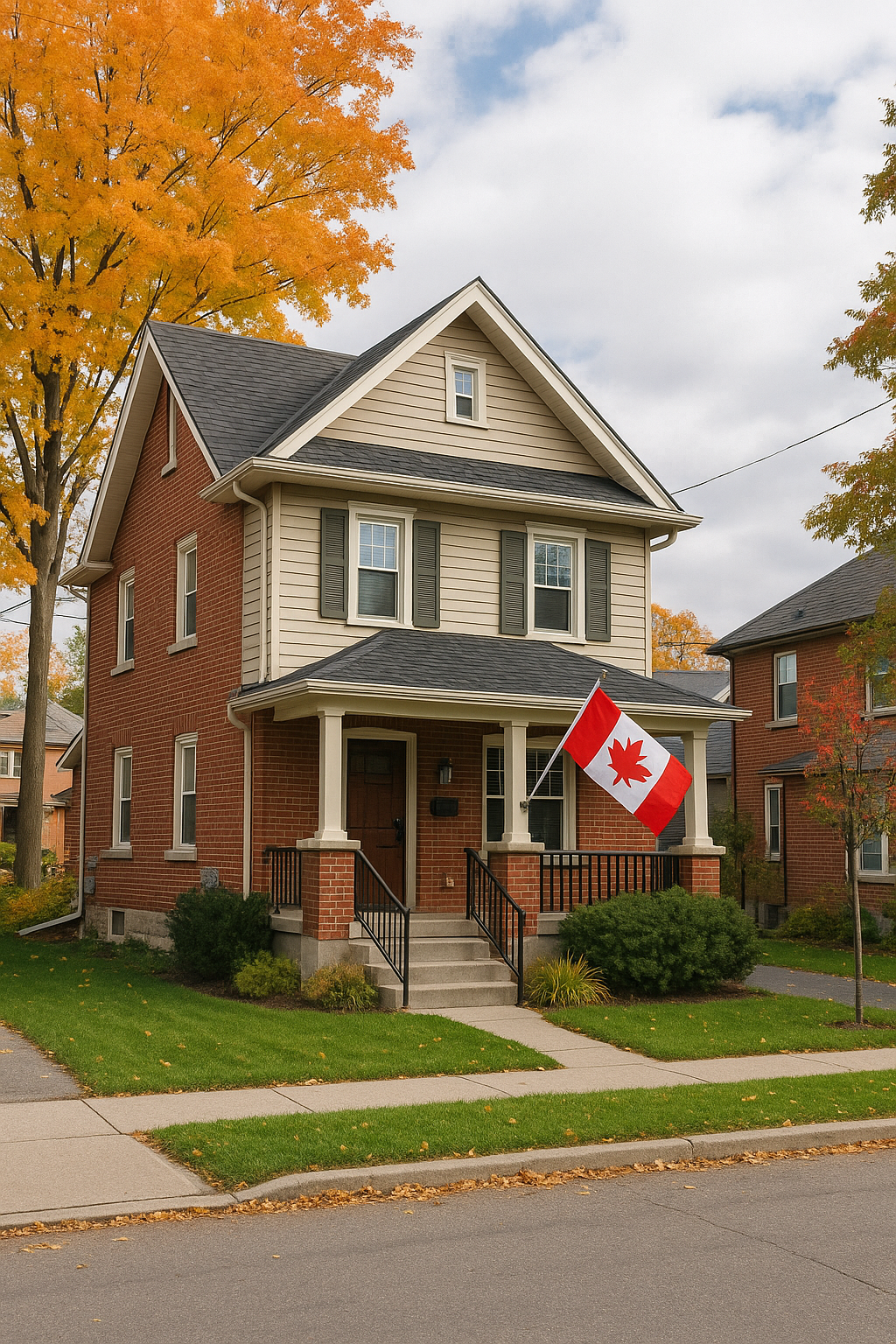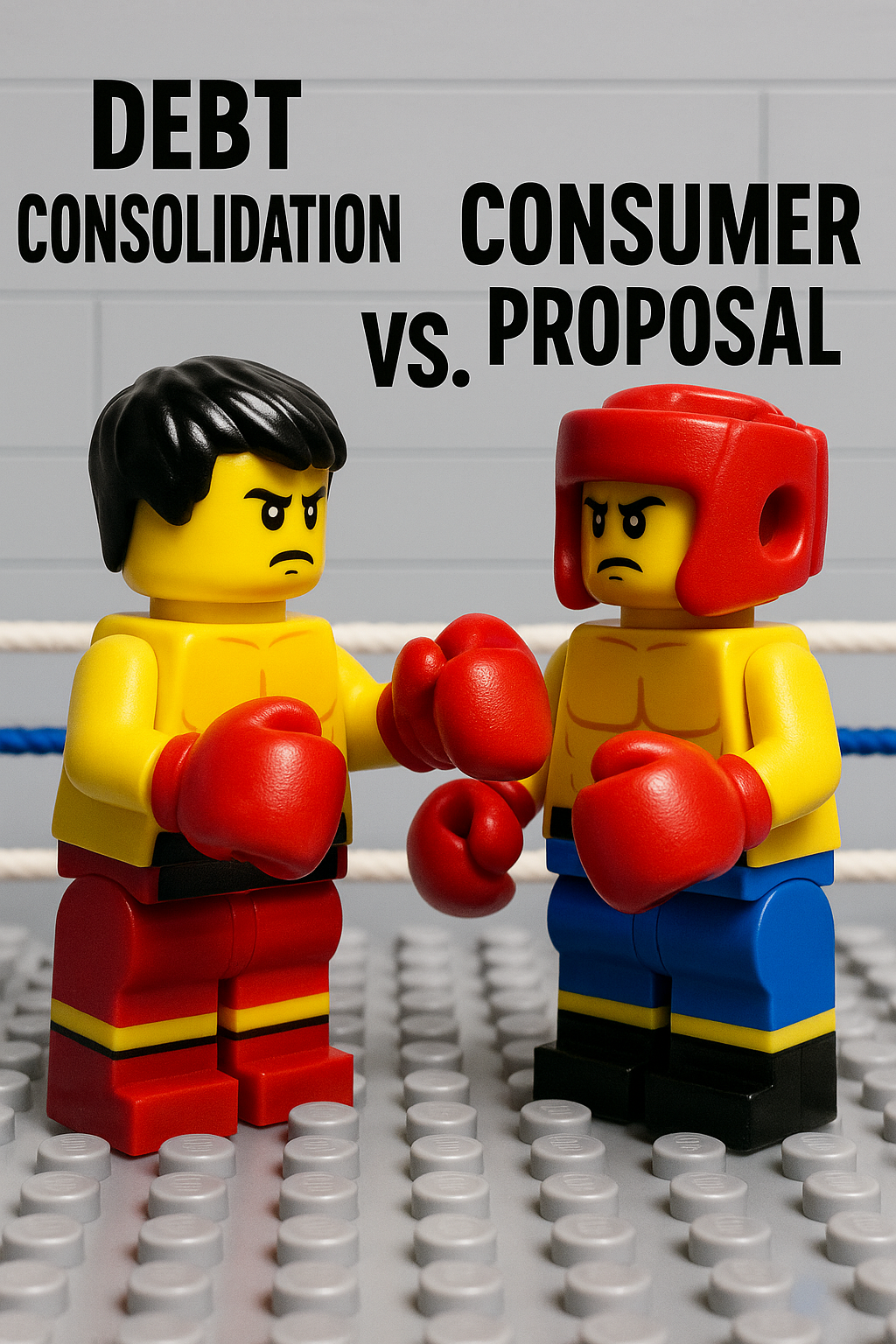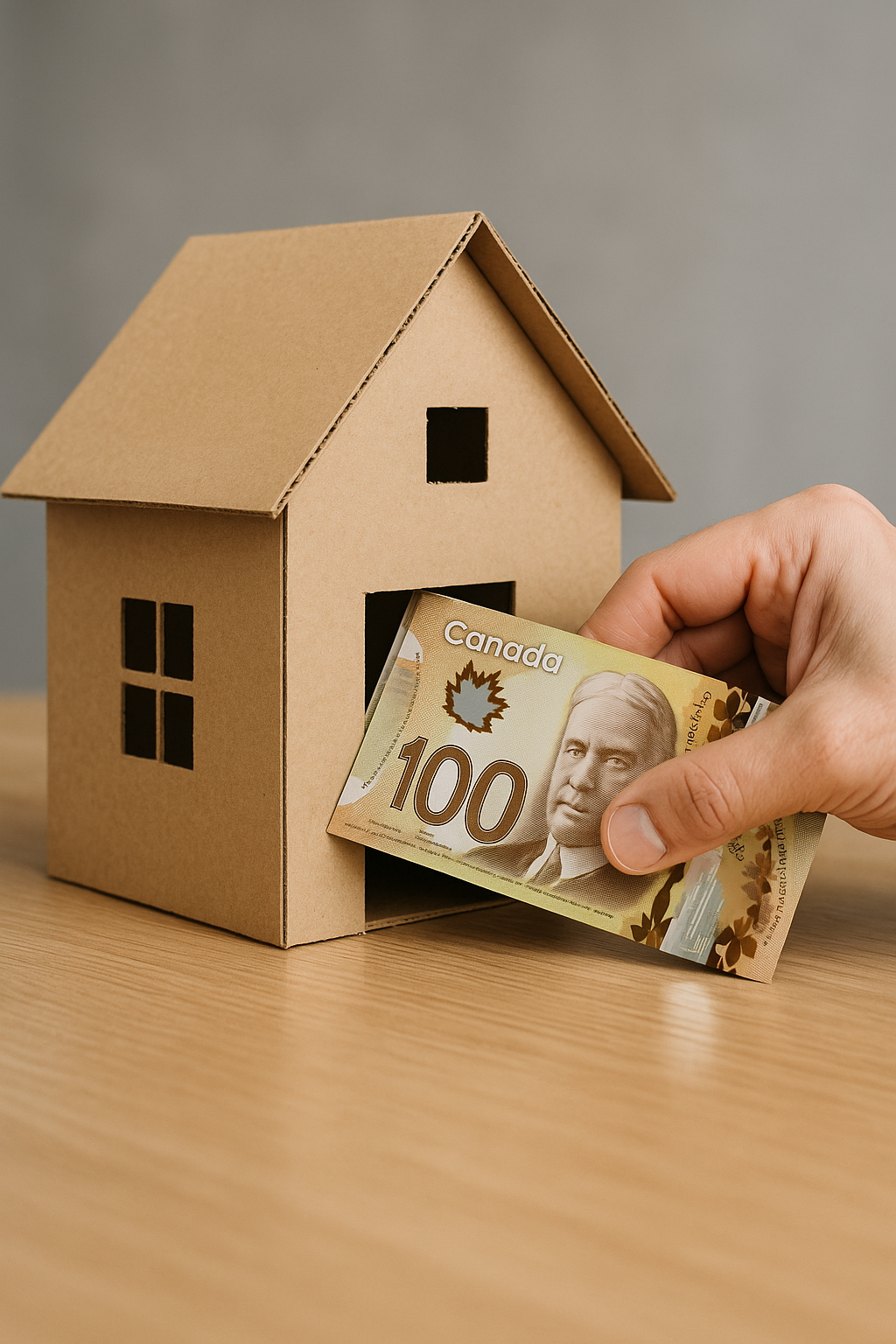For many Canadians struggling with debt, one of the biggest fears is losing their home if they claim bankruptcy. The good news? Claiming bankruptcy doesn’t automatically mean you’ll lose your home. Whether you keep your property depends on factors like your home equity, income, and mortgage status.
In this guide, we’ll break down exactly what happens to your home when you claim bankruptcy in Canada, explore alternatives that can help protect your property, and explain what to expect during and after the process.
Table of Contents
ToggleUnderstanding What It Means to Claim Bankruptcy in Canada
When you claim bankruptcy in Canada, you’re taking a legal step under the Bankruptcy and Insolvency Act (BIA) to get financial relief from debts you can’t repay. The process is managed by a Licensed Insolvency Trustee (LIT), a government-authorized professional who helps evaluate your financial situation, file your paperwork, and manage your assets.
Bankruptcy is designed to help you start fresh, not to punish you. It eliminates most unsecured debts such as credit cards, payday loans, and lines of credit. However, it treats secured debts (like your mortgage) differently because those debts are tied to specific assets.
Key takeaway:
Bankruptcy helps wipe out unsecured debt, but how it affects your home depends on whether there’s available equity that the trustee can use to pay your creditors.
What Happens to Your Home When You Claim Bankruptcy
How Home Equity Affects Bankruptcy
Your home’s equity plays the biggest role in determining whether you can keep it after you claim bankruptcy.
Here’s how equity is calculated:
Home Value – Mortgage Balance(s) = Equity
If your home is worth $600,000 and your mortgage balance is $595,000, you have $5,000 in equity. In Ontario, for example, the home equity exemption is approximately $10,000, meaning you could keep your home since your equity is under the exemption limit.
Provincial Equity Exemption Limits Across Canada
Provincial exemption amounts reflect different policy approaches to bankruptcy and varying housing market realities across Canada. Alberta offers the most generous exemption at $40,000, recognizing the province’s traditionally higher home values and strong property rights culture. British Columbia uses a two-tiered system: $12,000 for urban properties and $30,000 for rural properties.
Ontario’s exemption sits at $10,783 and is indexed to inflation, adjusting slightly each year. Saskatchewan provides $32,000 in protection, while Manitoba’s exemption is only $7,500, one of the lowest in the country. Quebec’s system is more complex, with exemptions ranging between $12,000 and $15,000 depending on the judicial district.
The Maritime provinces generally offer lower exemptions, ranging from $5,000 to $10,000. These smaller limits reflect both older legislation and historically lower property values in those regions. However, even with lower exemptions, many homeowners in these provinces keep their homes because recent buyers often have minimal equity once mortgage balances and selling costs are considered.
Key takeaway:
Your province’s exemption limit directly determines your level of risk. Always verify your current provincial exemption amount with a Licensed Insolvency Trustee, as limits can change periodically.
Provincial Home Equity Exemptions in Canada
| Province/Territory | Equity Exemption Limit | Notes |
|---|---|---|
| British Columbia | $12,000 (urban) / $30,000 (rural) | Depends on property location |
| Alberta | $40,000 | Highest exemption in Canada |
| Saskatchewan | $32,000 | Applies to principal residence |
| Manitoba | $7,500 | One of the lowest exemptions |
| Ontario | $10,783 | Indexed annually |
| Quebec | Varies | $12,000–$15,000 depending on district |
| New Brunswick | $5,000 | Very limited protection |
| Nova Scotia | $5,000 | Limited protection |
| Prince Edward Island | $8,000 | Moderate protection |
| Newfoundland and Labrador | $10,000 | Moderate protection |
Exemption amounts may vary by province and are subject to change. For the most accurate and up-to-date information, please consult a Licensed Insolvency Trustee.
Disclaimer: LendToday.ca and its agents are not Licensed Insolvency Trustees and do not provide insolvency or bankruptcy services.
If your equity exceeds the provincial exemption, the Licensed Insolvency Trustee may require you to either:
-
Pay the difference into the bankruptcy estate, or
-
Sell the property and use the proceeds to repay creditors.
Common mistake: Many homeowners assume claiming bankruptcy means automatic foreclosure, but that’s not true. If your equity is small and your payments are current, you can often keep your home.
Mortgage Status: Current vs. Arrears
If your mortgage payments are current, the lender generally allows you to continue paying and stay in the property, even after you claim bankruptcy. Your mortgage is considered a secured debt, meaning the lender’s claim is against your home, not you personally.
If your payments are in arrears or past due, the lender may initiate a power of sale or foreclosure process to recover their funds. Once this happens, you’ll need to act quickly to protect your equity.
Options include:
-
Refinancing to bring payments up to date.
-
Taking a second mortgage to consolidate debt or catch up on arrears.
-
Negotiating directly with your lender for a payment plan.
Important to note: The sooner you communicate with your mortgage professional, the more control you’ll have over the outcome.
The Role of Your Licensed Insolvency Trustee
When you claim bankruptcy, your LIT assesses:
-
The value of your home
-
Outstanding mortgage balance
-
Home equity
-
Provincial exemptions
They’ll determine whether your property is exempt or whether you need to make payments into the estate to keep it. Because rules vary by province, professional advice is essential before making decisions that could affect your home ownership.
Bankruptcy vs. Consumer Proposal: Which Protects Your Home Better?
Many Canadians are surprised to learn they have another option besides claiming bankruptcy, such as a consumer proposal.
A consumer proposal is a formal debt settlement arranged through a Licensed Insolvency Trustee. It allows you to repay part of what you owe over up to five years without losing your assets.
| Feature | Consumer Proposal | Bankruptcy |
|---|---|---|
| Asset Ownership | Keep all assets | May surrender non-exempt assets |
| Credit Impact | Remains for 3 years after completion | Remains for 6–7 years |
| Monthly Payments | Fixed, based on income | May increase with income changes |
| Duration | Up to 5 years | 9–21 months (first bankruptcy) |
| Home Ownership | Usually unaffected | Depends on home equity |
Important to note:
If you have significant home equity or want to avoid selling your house, a consumer proposal may be a better solution. You keep control of your property while still obtaining relief from overwhelming debt.

Alternatives to Claim Bankruptcy for Homeowners
Bankruptcy should always be a last resort. Before filing, it’s worth exploring financial tools that can help you regain control and protect your home equity.
Refinance or Second Mortgage
Refinancing your existing mortgage or taking out a second mortgage can consolidate high-interest debts into one manageable payment.
-
You can use your home’s equity to repay unsecured debts.
-
Private lenders are often flexible, even if you have bad credit or irregular income.
LendToday works with both traditional and private lenders across Canada to help homeowners avoid bankruptcy and keep their homes.
Home Equity Line of Credit (HELOC)
A HELOC allows you to borrow against your home’s equity when needed. It’s a revolving line of credit, which means you only pay interest on what you use.
If your credit score has taken a hit, some lenders still offer equity-based HELOCs, focusing on your property’s value, not just your credit history.
Debt Consolidation Loan
A debt consolidation loan combines multiple debts into one monthly payment at a lower rate.
-
Simplifies repayment
-
Protects your credit from further damage
-
Helps prevent the need to claim bankruptcy
Key takeaway: If your mortgage and income are stable, refinancing or debt consolidation can be powerful alternatives – claim bankruptcy.
Rebuilding After You Claim Bankruptcy
Claiming bankruptcy doesn’t end your financial life; it starts a new chapter. Once you’ve been discharged, you can take steps to rebuild credit and stability.
-
Check your credit report with Equifax and TransUnion.
-
Apply for a secured credit card to show responsible repayment.
-
Keep balances low and pay on time.
-
Budget for the long term — avoid relying on high-interest credit.
-
Work with a mortgage broker when you’re ready to re-enter the housing market.
Common myth: You can’t qualify for a mortgage after bankruptcy.
In reality, many Canadians rebuild their credit within two years and qualify for a new mortgage, often through alternative or B-lenders who consider post-bankruptcy borrowers.
How to Protect Your Home Equity Before You Claim Bankruptcy
If you’re considering filing, take these proactive steps to preserve your equity:
-
Get a professional home appraisal to know your true equity.
-
Speak with a mortgage expert about refinancing or private lending.
-
Explore debt consolidation or consumer proposal options first.
-
Avoid transferring your home to someone else — this can be seen as fraudulent conveyance.
Common mistake: Waiting too long to act. By the time homeowners file, their mortgage may already be in arrears or under power of sale. Early intervention can make all the difference.
When It Might Still Be Best to Claim Bankruptcy
In some situations, claiming bankruptcy is still the most practical choice.
Consider it when:
-
You’re facing wage garnishment or CRA liens.
-
Unsecured debts greatly exceed your income or assets.
-
You’ve tried consolidation or proposals without success.
-
The stress of debt is affecting your health and family life.
Key takeaway: Bankruptcy exists to provide a fresh start, not a failure. Many homeowners use it to reset financially and rebuild responsibly.
Key Canadian Facts and Statistics
According to the Office of the Superintendent of Bankruptcy (OSB), more than 100,000 Canadians filed for insolvency in 2024, with bankruptcies making up about one-third of those cases.
The average Canadian household debt-to-income ratio sits near 180%, meaning for every dollar earned, $1.80 is owed. Rising interest rates and higher living costs continue to push homeowners toward financial relief options such as proposals or refinances.
These figures highlight why knowing your rights before you claim bankruptcy is essential — especially if you own property.
Final Thoughts: Do You Really Lose Your Home If You Claim Bankruptcy?
In most cases, you don’t automatically lose your home when you claim bankruptcy in Canada. It all depends on your home equity, mortgage payments, and financial plan.
The best approach is to get advice early, from both a Licensed Insolvency Trustee and a mortgage professional. Together, they can help you protect your equity, reduce your debt, and avoid unnecessary financial loss.
Facing Bankruptcy? Protect Your Home Equity Before It’s Too Late
FAQ
Q1: Can I keep my house if I claim bankruptcy in Canada?
Yes, if your equity is within the provincial exemption and your mortgage payments are up to date, you may keep your home. Each province sets its own limits, so professional advice is key.
Q2: What happens to my mortgage when I claim bankruptcy?
Your mortgage remains a secured debt. If you continue making payments, the lender generally allows you to stay. If you default, they may take possession through a power of sale.
Q3: Do I lose my home if I have equity?
If your home equity exceeds the exemption, you might need to pay the difference to your trustee or sell the property. In some cases, refinancing can help you keep it.
Q4: Is a consumer proposal better than bankruptcy for homeowners?
Yes, in many cases. A consumer proposal lets you repay part of your debt while keeping your assets. It also has a smaller impact on your credit than bankruptcy.
Q5: How long does bankruptcy affect my credit in Canada?
A first bankruptcy stays on your credit report for six years after discharge (seven years with TransUnion). A consumer proposal usually disappears three years after completion.
Q6: Can I get another mortgage after I claim bankruptcy?
Yes. After rebuilding credit and saving a down payment, you can qualify for a new mortgage, often with alternative lenders first, then traditional lenders later.
- The Critical Consequences of Not Paying Your Mortgage for 3 Months - November 21, 2025
- The Critical Differences Between a HELOC and a Home Equity Loan Every Canadian Homeowner Must Know - November 19, 2025
- How to Get a Personal Loan Secured by Home in Canada in 2025 - November 17, 2025
